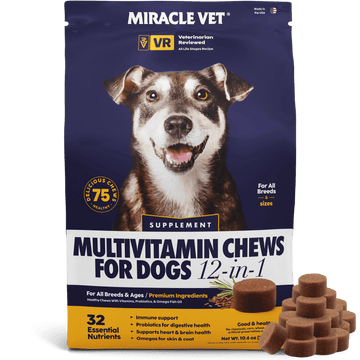Helping your underweight dog gain weight takes more than just feeding extra kibble. The real magic happens when you combine high-quality nutrition with thoughtful exercise. Not only does this approach support healthy weight gain, but it also builds lean muscle mass, improves energy levels, and enhances your pup's overall well-being.
This guide covers the best dog workouts for muscle, indoor exercise routines, swimming options, and even treadmill time. Whether you're looking to muscle up your dog, try canine conditioning exercises, or explore dog hydrotherapy, there are safe and effective options for every pup. You’ll also discover a range of underweight dog exercises, tailored to support steady and healthy growth.
Balancing Exercise with Weight Gain Goals
If your dog is underweight, the goal isn't to burn off calories but to build muscle and gain mass. Activities like gentle walks, dog swimming exercises, and canine fitness exercises are great because they strengthen the body without overexertion. These are excellent exercises for underweight dogs, helping them gain strength while preserving energy.
Too much intense activity can make it harder for your dog to gain weight. That’s why it’s important to monitor energy levels and pair each workout with calorie-dense meals. Think of exercise not as a calorie-burner, but as the best way to promote lean muscle growth and better overall health. Incorporating targeted activities for underweight dogs into your pup’s routine will make all the difference.
Understanding the Exercise Needs of Underweight Dogs
Each dog is different. Age, breed, underlying medical conditions, and body weight all play a role in determining how much and what type of activity your pup needs. Start slow with dog home exercise options and increase the duration as your dog builds stamina. Many underweight dog exercises start with short durations and gentle movements to ease your pup into a more active lifestyle.
Look for signs of stress or fatigue, like panting, limping, or reluctance to move. On the other hand, a dog that’s bouncing off the walls may be craving more structure. A good plan includes low-impact exercises, strength-building routines, and daily dog training exercises to keep your pup both mentally and physically active. Dogs dealing with behavioral problems like excessive chewing or barking may actually be signaling that they aren't getting enough exercise. That’s where carefully selected exercises for underweight dogs come into play.
Tailored Exercise Plans for Weight Gain
A one-size-fits-all workout won’t cut it. Tailor your dog’s routine to their size, age, and current fitness level. For example:
-
Older dogs or dogs with arthritis: Opt for dog swimming, physical therapy, or dog water aerobics.
-
Small breeds: Keep things short and sweet with indoor exercise for dogs.
-
Working breeds: Incorporate canine conditioning and body awareness exercises for full-body engagement.
Regularity matters. Aim for short, consistent sessions and include mental stimulation with puzzle games or obedience training. Visits to the dog park can also be a great opportunity for playtime and social engagement, helping your skinny dog gain weight in a natural and enjoyable way. Always prioritize activities for underweight dogs that support their comfort and progress.
Signs of Over- or Under-Exercise
Under-exercised dogs may seem sluggish, anxious, or display destructive behavior. You might notice weight loss or low muscle tone. Sometimes, a lack of activity can even affect a dog's diet and reduce their interest in food.
Over-exercised dogs often pant excessively, lag behind on walks, or act sore the next day. Watch for these signs and adjust the routine accordingly.
Unusual behavior might also signal an underlying cause, such as tapeworms, which can prevent healthy weight gain. Consult your veterinarian if your pooch is eating normally but still seems underweight. Using a mix of underweight dog exercises and the right diet can help your dog bounce back.
Vet Suggested Best Types of Exercise for Weight Gain
1. Walks, Jogs, and Light Runs
Walking is the foundation of any good routine. Start with 20-30 minute strolls, adjusting based on your dog's energy level. For athletic breeds, a light jog with your dog can build stamina and dog muscle tone over time. Don't forget to try jog-a-dog treadmills or dog walking treadmills for consistent movement. A long leisurely walk in the morning or evening can be both relaxing and productive. These are excellent activities for underweight dogs that want more stimulation without burning too many calories.
2. Swimming and Hydrotherapy
Swimming is ideal for dogs with joint issues or low stamina. Try:
-
Dog swimming exercises
-
Dog water aerobics
-
Hip dog canine hydrotherapy
Swimming builds muscle while being easy on the joints. Always supervise and consider a life jacket. It’s also a wonderful way for older dogs to exercise without pain. This makes it one of the most effective exercises for underweight dogs with limited mobility.
3. Fetch and Tug-of-War
Games like fetch build speed and agility. Tug-of-war is great for dog muscle-building workouts. Use dog exercise toys that offer some resistance for an extra challenge. Throwing a frisbee in the yard or at the dog park adds excitement to your pooch’s routine. These playful routines are simple yet effective underweight dog exercises that make a big impact.
4. Obstacle Courses & Strength Training
Create a home obstacle course using tunnels, ramps, and balance boards. Include:
-
Dog leg strengthening exercises
-
Dog core strengthening exercises
-
Back leg strengthening exercises for dogs
These keep your dog mentally stimulated and help with coordination and strength. They're perfect for improving body condition score on the path to an ideal weight. As some of the most targeted activities for underweight dogs, they build strength progressively.
5. Treadmill Time
Indoor treadmills offer a safe space to keep your dog active year-round. Try a pet treadmill, indoor exercise for dogs, or an indoor dog treadmill. Start with 5-10 minute sessions and gradually build up. These tools help regulate metabolism and support daily exercise when the weather isn’t ideal. Structured underweight dog exercises, such as treadmill sessions, provide a controlled environment for consistent results.
What exercises are best for an underweight dog to gain muscle?
For underweight dogs, low-impact exercises like walking, swimming, and controlled playtime are ideal. Gradually increase intensity with strength-building activities such as gentle tug-of-war or using light weights in their harness. Always consult a veterinarian to tailor a safe and effective exercise plan for your dog's specific needs.
Indoor Exercise Options
Not every dog loves the outdoors—and that's okay! Here are great ways to exercise your dog indoors:
-
Exercise your dog at home with tug toys or interactive puzzles
-
Canine workout circuits using stairs, hallways, or obstacle courses
-
Daily dog training exercises like sit, stay, and come with rewards
-
Use a walking/jumping dog toy to build coordination
Even exercise puppies indoors with short play bursts and soft toys. Indoor routines are especially helpful for picky eaters who may benefit from activity before meals. Many of these are excellent exercises for underweight dogs who prefer a calm environment.
How Much Exercise Is Enough?
Start with 15 to 30 minutes of exercise, 1-2 times per day. Gradually increase time and intensity as your dog gains stamina and weight. Always watch for signs of fatigue.
If you’re unsure how much your dog should weigh, use a dog food calculator to assess ideal feeding portions and your dog's weight targets. Overfeeding can lead to obesity, which poses its own health risks. Balanced underweight dog exercises alongside smart feeding will yield steady gains.

Nutrition and Supplements for Dog Weight Gain
Exercise alone won’t do the trick. Combine workouts with high-quality, protein-rich dog food. Add in healthy fats and consider supplements like:
-
Dog-safe protein powders for muscle
-
Pumpkin and sweet potatoes for extra calories
-
Omega-3s to support recovery
Wet food can be especially beneficial for picky eaters or dogs with low appetites. Always talk to your dog's veterinarian before starting any supplement routine to ensure they fit into your dog's food and health goals.
Tracking Progress & Making Adjustments
Keep track of your dog’s body condition score, muscle tone, and energy levels. Make changes based on:
-
Appetite
-
Body shape (visible ribs or hips)
-
Interaction with exercise and playtime
Use a dog food calculator to monitor weight and adjust both exercise and meals accordingly. A little tweaking goes a long way in helping your pooch reach their ideal weight. Reassessing your set of underweight dog exercises can ensure continued improvement.
Conclusion
Helping your dog gain weight is a journey, not a sprint. With the right mix of dog workouts for muscle, indoor exercises, and canine conditioning, you can help your furry friend reach a healthy weight safely. Keep sessions consistent, monitor their health, and don’t forget the power of playtime, mental stimulation, and a nutritious dog's diet in the process. The right underweight dog exercises will set your pup on the path to better health and happiness.
Frequently Asked Questions
What are the signs my dog is gaining healthy weight?
Look for better energy, fuller body shape, visible muscle tone, and a shinier coat. The dog's weight should trend upward gradually, not spike too fast.
How often should I exercise my underweight dog?
Start with short sessions twice a day. Adjust as your dog builds stamina. This is the best way to build muscle without burning off too many calories. Use consistent exercises for underweight dogs to avoid overexertion.
Can exercise replace dietary changes?
No. A nutrient-rich dog's diet is essential. Exercise supports muscle building, not just weight gain. Both need to work together.
Which breeds struggle most with weight gain?
Greyhounds, Whippets, and high-energy working dogs often have a harder time gaining weight due to fast metabolism and high activity levels. These breeds often require specially tailored activities for underweight dogs.
What if my dog gets tired during workouts?
Slow down or shorten the session. Let your pooch rest and try something less intense, like dog water aerobics or exercise dogs indoors. If fatigue continues, consult your veterinarian to rule out an underlying cause.












